Links to external sources may no longer work as intended. The content may not represent the latest thinking in this area or the Society’s current position on the topic.
A cracking approach to inventing tough new materials: fracture stranger than friction

Scientific discussion meeting organised by Dr Kevin Kendall FRS, Professor Anthony Kinloch FREng FRS, Professor Neil Alford MBE FREng and Dr Siva Bohm.
In the 100 years since Griffith published his ground-breaking paper on the energy criterion for cracking, there have been great advances in the understanding of cracks. This meeting reflected on recent observations in the field plus interesting new theories of cracking, as well as discussing how to invent tough new materials, while removing problems in Fracture Mechanics.
The schedule of talks and speaker biographies and abstracts are available below. An accompanying journal issue has been published in Philosophical Transactions of the Royal Society A.
Attending this event
This meeting has taken place. You can watch the recording here.
Enquiries: contact the Scientific Programmes team
Organisers
Schedule
Chair

Professor John Williams FREng, University of Cambridge, UK

Professor John Williams FREng, University of Cambridge, UK
John Williams is Emeritus Professor of Engineering Tribology at the University of Cambridge. After graduating in Mechanical Sciences he completed his PhD in the Department of Physics supervised by Professor David Tabor. He worked for a number of years for Tube Investments on a variety of industrial projects including early work on spiral groove seals before returning to academia first at the University of Warwick and then in Cambridge. He is the author of the textbook Engineering Tribology and of numerous journal and conference papers. He was is also co-director of the successful Cambridge Tribology Course which ran annually from 1993 to 2019. He is a winner Tribology Trust Silver Medal and of James Clayton and Donald Julius Groen Prizes from the Institution of Mechanical Engineers. In 2005 he was elected to the Royal Academy of Engineering.
| 07:45 - 08:00 | Introduction by the Royal Society and Dr Kevin Kendall FRS |
|---|---|
| 08:00 - 08:10 |
JKR half a century back

Professor John Williams FREng, University of Cambridge, UK

Professor John Williams FREng, University of Cambridge, UKJohn Williams is Emeritus Professor of Engineering Tribology at the University of Cambridge. After graduating in Mechanical Sciences he completed his PhD in the Department of Physics supervised by Professor David Tabor. He worked for a number of years for Tube Investments on a variety of industrial projects including early work on spiral groove seals before returning to academia first at the University of Warwick and then in Cambridge. He is the author of the textbook Engineering Tribology and of numerous journal and conference papers. He was is also co-director of the successful Cambridge Tribology Course which ran annually from 1993 to 2019. He is a winner Tribology Trust Silver Medal and of James Clayton and Donald Julius Groen Prizes from the Institution of Mechanical Engineers. In 2005 he was elected to the Royal Academy of Engineering. |
| 08:10 - 08:25 |
Advances of the JKR theory of adhesive contact and probing of prestressed cell membranes
Contact probing is the preferable method for studying mechanical properties of very small volumes of materials. Because adhesion caused by van der Waals forces is a universal molecular phenomenon, the nanoindentation problems should normally take into account adhesive interactions. The JKR (Johnson-Kendall-Roberts) theory of adhesive contact is an elegant mathematical theory that includes a combination of the Hertz contact theory, Derjaguin approximation and Griffith criterion. Originally it was introduced for frictionless contact between a rigid spherical indenter and an isotropic half-space. It is shown that the JKR theory may be extended for arbitrary convex, blunt axisymmetric indenters, in particular to indenters whose shapes may be described by power-law profiles of an arbitrary degree. The results are also extended for samples whose materials can be described by linear or linearized models having rotational isotropy of its mechanical properties like transversely isotropic or homogeneously prestressed materials. These extensions allow the researchers to apply the JKR formalism to the biological cell membranes that are prestressed. For the first time, effects caused by molecular adhesion for living cells are analytically studied taking into account the mechanical properties of cell membranes whose stiffness depends on the level of the tensile prestress. 
Professor Feodor Borodich, Cardiff University, UK

Professor Feodor Borodich, Cardiff University, UKProfessor FM Borodich holds several degrees in Mechanics and Applied Mathematics (MSc 1979, PhD 1984, DSc 1990) awarded by the Faculty of Mechanics and Mathematics at M.V. Lomonosov Moscow State University (Russia), MSc degree in Civil Engineering (Moscow 1985), and DSc (Hon) of V.A. Bely Metal Polymer Research Institute of the National Academy of Sciences of Belarus (2016). He is a Foreign Member of the Russian Academy of Natural Sciences (2018). In 1979–1994 he worked in Moscow. In 1995–2001 he held various research and teaching positions at several universities including Cambridge, Hannover, Glasgow, and Barcelona. In 2001–2003 he was a visiting professor at Northwestern University, USA. Since 2004, he has been a Professor at Cardiff University and Head of The Cardiff Nanoscience and Nanoengineering cross-disciplinary Group (NANOSNEG). His research interests are in many areas of Engineering, Mechanics and Applied Mathematics related to modelling real-world processes especially at nanoscale. |
| 08:25 - 08:30 | Questions |
| 08:30 - 08:45 |
Dynamics of attachment and adhesion: measuring biofouling by AFM
The Atomic Force Microscope (AFM) is now being widely used to determine the properties and interactions of cell and microbial surfaces and their attachment to substrata. Perpendicular force measurements take place between the AFM tip and surface, and tips may be modified in a number of ways to determine the force of interaction. Perpendicular measurements may also be used on a molecular scale to determine the different regions of chemistry on a cell/microbial surface. ‘Lateral’ force measurements are carried out by depositing microorganisms onto a surface and passing the cantilever tip across them in a raster fashion. By increasing the load on the cantilever tip following each scan, the increased force taken to remove the microbial cells can be mathematically calculated to determine the strength of microbial attachment to the surface. These methods can enhance the results obtained using traditional laboratory methods, and lead to a greater understanding of cell interactions. This work presents an overview of the different uses of AFM to understand the properties of cell and microbial surfaces and their attachment to substrata. 
Professor Kathryn Whitehead, Manchester Metropolitan University, UK

Professor Kathryn Whitehead, Manchester Metropolitan University, UKKathryn Whitehead is a Professor in Microbiology at Interfaces at Manchester Metropolitan University, UK. She has extensive experience in working on designing and characterising antimicrobial, biomimetic and anti-adhesive surfaces and decontamination systems for use in food industries and medical systems. Her work also includes a number of other collaborative areas including the development of antimicrobials, and investigating the growth (microbial fuel cells) and eradication of biofilms, the effects of oral bacterial metabolites on renal function and factors leading to the incidence of surgical site infections. She has published more than 100 articles in these areas. |
| 08:45 - 08:50 | Questions |
| 08:50 - 08:55 |
Discussion contribution – Force-based agent-based models of tumour development
Once cancer is initiated, with normal cells mutated into malignant ones, a solid tumour grows, develops and spreads within its microenvironment invading the local tissue; the disease progresses and the cancer cells migrate around the body leading to metastasis, the formation of distant secondary tumours. Interactions between the tumour and its microenvironment drive this cascade of events which have devastating, if not fatal, consequences for the human host/patient. Among these interactions, biomechanical interactions are a vital component. In this talk, key biomechanical relationships are discussed through a presentation of modelling efforts by the mathematical and computational oncology community. The main focus is directed, naturally, towards lattice-free agent-based, force-based models of solid tumour growth and development. In such models, interactions between pairs of cancer cells (as well as between cells and other structures of the tumour microenvironment) are governed by forces. These forces are ones of repulsion and adhesion, and are typically modelled via either an extended Hertz model of contact mechanics or using Johnson–Kendall–Roberts theory. This talk will introduce both approaches and should hope to spark lovely discussion. 
Dr Cicely Macnamara, University of Glasgow, UK

Dr Cicely Macnamara, University of Glasgow, UKCicely is a Rankin-Sneddon Fellow at the University of Glasgow. As a mathematical biologist with a particular interest in cancer modelling her work spans many topics in applied mathematics. Her most recent work involves the building of a 3D multi-scale model of tumour growth and development within the tumour microenvironment providing a virtual tumour digital twin framework. Her other interests include modelling gene regulatory networks and oncolytic virotherapy. |
| 08:55 - 09:00 |
Discussion contribution – Nano-cracking in high Ni cathodes – a leading source of degradation in Li-ion batteries
High nickel cathode materials such as NMC 811 are currently receiving much attention for increasing the energy density in Li-ion batteries. The majority of these materials are based on complex, polycrystalline aggregate-type particles. As the battery ages, the secondary structure starts to develop micro-cracks, 
Dr Mel Loveridge, WMG, University of Warwick, UK

Dr Mel Loveridge, WMG, University of Warwick, UKDr Melanie Loveridge is an Associate Professor of Electrochemical Materials at WMG. With over 12 years of experience within Li-ion battery research, she has spent equal amounts of time in academic research and as a characterisation specialist for a spin-out company from Imperial College. Her research areas focus on materials discovery and characterisation techniques, but also understanding mechanisms of degradation and battery forensics. Dr Loveridge is a lead inventor on several world patent families around electrode materials, compositions and structures, with > 30 publications in Q1 journals. She sits on many advisory panels and committees for academia and industry and regularly engages with many outreach activities, including the British Science Festival, Radio 4’s Today Program and Costing the Earth, with several media articles published, eg The Telegraph. |
| 09:00 - 09:05 |
Discussion contribution – Particle friction and adhesion in process engineering
This talk will discuss the importance of friction and adhesion between particles in governing the dynamic behaviour of particle systems. It covers the following topics: (1) origins of rolling friction and adhesion; (2) derivation of equations to determine the resulting forces; and (3) a few examples showing their effects on the dynamics of particle systems. 
Professor Aibing Yu, Monash University, Australia

Professor Aibing Yu, Monash University, AustraliaProfessor Aibing Yu obtained his BEng in 1982 and MEng in 1985 from Northeastern University, China, his PhD in 1990 from University of Wollongong and DSc in 2007 from the University of New South Wales, Australia. He is currently Pro Vice-Chancellor and President (Suzhou), Monash University, and Director of ARC Research Hub for Computational Particle Technology. He is a world-leading scientist in particle/powder technology and process engineering. He has authored/co-authored >1,000 publications (including >750 collected in the ISI Web of Science) and delivered many invited plenary/keynote presentations at various international conferences. He is Executive Editor of Powder Technology, Regional Editor of Granular Matter, and on the editorial board of ~20 learned journals. He is a recipient of numerous prestigious awards and fellowships. He was elected as a Fellow of the Australian Academy of Technological Sciences and Engineering in 2004, and Australian Academy of Science in 2011, and Foreign Academician of Chinese Academy of Engineering in 2017. |
| 09:05 - 09:45 | Discussion |
| 09:45 - 10:00 | Break |
Chair

Professor Feodor Borodich, Cardiff University, UK

Professor Feodor Borodich, Cardiff University, UK
Professor FM Borodich holds several degrees in Mechanics and Applied Mathematics (MSc 1979, PhD 1984, DSc 1990) awarded by the Faculty of Mechanics and Mathematics at M.V. Lomonosov Moscow State University (Russia), MSc degree in Civil Engineering (Moscow 1985), and DSc (Hon) of V.A. Bely Metal Polymer Research Institute of the National Academy of Sciences of Belarus (2016). He is a Foreign Member of the Russian Academy of Natural Sciences (2018). In 1979–1994 he worked in Moscow. In 1995–2001 he held various research and teaching positions at several universities including Cambridge, Hannover, Glasgow, and Barcelona. In 2001–2003 he was a visiting professor at Northwestern University, USA. Since 2004, he has been a Professor at Cardiff University and Head of The Cardiff Nanoscience and Nanoengineering cross-disciplinary Group (NANOSNEG). His research interests are in many areas of Engineering, Mechanics and Applied Mathematics related to modelling real-world processes especially at nanoscale.
| 10:00 - 10:10 |
Cracking theories from Griffith to JKR and beyond

Professor Feodor Borodich, Cardiff University, UK

Professor Feodor Borodich, Cardiff University, UKProfessor FM Borodich holds several degrees in Mechanics and Applied Mathematics (MSc 1979, PhD 1984, DSc 1990) awarded by the Faculty of Mechanics and Mathematics at M.V. Lomonosov Moscow State University (Russia), MSc degree in Civil Engineering (Moscow 1985), and DSc (Hon) of V.A. Bely Metal Polymer Research Institute of the National Academy of Sciences of Belarus (2016). He is a Foreign Member of the Russian Academy of Natural Sciences (2018). In 1979–1994 he worked in Moscow. In 1995–2001 he held various research and teaching positions at several universities including Cambridge, Hannover, Glasgow, and Barcelona. In 2001–2003 he was a visiting professor at Northwestern University, USA. Since 2004, he has been a Professor at Cardiff University and Head of The Cardiff Nanoscience and Nanoengineering cross-disciplinary Group (NANOSNEG). His research interests are in many areas of Engineering, Mechanics and Applied Mathematics related to modelling real-world processes especially at nanoscale. |
|---|---|
| 10:10 - 10:25 |
Computational versus experimental cracking results
A mathematical formulation and numerical modelling framework for brittle crack propagation in heterogeneous materials is presented. The formulation is developed in the framework of configurational mechanics and solved numerically using the finite element method. The local form of the first law of thermodynamics provides an equilibrium condition for the crack front, expressed in terms of the configurational forces. Applying the principle of maximal energy dissipation, it is shown that the direction of the crack propagation is given by the direction of the configurational forces. In combination with the Griffith fracture criterion, these are utilised to determine the position of the continuously evolving crack front. The methodology is extended for heterogeneous materials (spatially varying Young’s modulus and fracture energy) without the need for any further assumptions. Further, Professor Pearce considers problems involving the strong interplay between contact forces and crack evolution, where the crack front is propagating across contact surfaces. The resulting fully implicit computational formulation is able to model objectively complex unstable, non-linear, quasi-static crack propagation. 
Professor Chris Pearce, University of Glasgow, UK

Professor Chris Pearce, University of Glasgow, UKChris is Professor of Computational Mechanics in the James Watt School of Engineering and holds the Royal Academy of Engineering / EDF Research chair. His research has delivered advances in the computational analysis of materials and structures, with particular focus on fracture, multi-scale mechanics and multi-physics modelling. This has been achieved through the integration of theoretical advances in continuum mechanics, new numerical methods and algorithms, novel finite element technology and adoption of the latest advances in scientific computing. His research has led him to work closely with the civil nuclear industry, providing computational modelling tools and advice for assessing structural integrity. He is co-Director of the Glasgow Computational Engineering Centre, a Fellow of the Institution of Civil Engineers and a Chartered Engineer. He is also Vice Principal (Research), responsible for research strategy and policy development at the University of Glasgow. |
| 10:25 - 10:30 | Questions |
| 10:30 - 10:45 |
Phase field fracture methods
Phase field fracture methods have gained remarkable popularity in recent years. The reasons are arguably twofold. Firstly, phase field modelling has provided a suitable platform for the simple yet rigorous fracture thermodynamics principles first presented by Griffith. Crack propagation is predicted based on a global energy minimization, without the need for ad hoc criteria. Secondly, phase field formulations have proven to be computationally compelling; advanced fracture features such as complex crack trajectories, crack branching, nucleation, and merging can be captured in arbitrary geometries and dimensions, on the original finite element mesh and without convergence issues. In this talk, Dr Martinez-Paneda will review the fundamentals of phase field fracture methods and examine their capabilities in delivering predictions in agreement with the classical fracture mechanics theory pioneered by Griffith. New results dealing with the initiation of crack growth and stable crack propagation will be presented, showing how phase field fracture methods satisfactorily approximate classical fracture mechanics predictions and can also reconcile stress and toughness criteria for fracture. Finally, emphasis will be placed on recent extensions of phase field fracture formulations to tackle coupled physical problems of significant technological relevance, such as hydrogen embrittlement or battery degradation. 
Dr Emilio Martinez-Paneda, Imperial College London, UK

Dr Emilio Martinez-Paneda, Imperial College London, UKDr Emilio Martinez-Paneda is a Senior Lecturer in Mechanics of Materials at Imperial College London, where he leads the Mechanics of Infrastructure Materials Lab. Prior to joining Imperial College as a Lecturer in September 2019, Dr Martinez-Paneda was an 1851 Research Fellow at the University of Cambridge. His research interests span a wide range of topics within applied mechanics; from chemo-mechanical fracture to small scale plasticity. Dr Martinez-Paneda has published more than 50 scientific papers in the best journals of the field and received numerous prestigious awards and fellowships for his contributions. Among others, Dr Martinez-Paneda is the recipient of RILEM’s Gustavo Colonetti Medal, SEMNI’s Simó Prize, IMechE’s Prestige Award and the Royal Academy of Engineering UK’s Young Engineer of the Year award. |
| 10:45 - 10:50 | Questions |
| 10:50 - 10:55 | Discussion contribution – speaker tbc |
| 10:55 - 11:00 |
Discussion contribution – Cracks in soft solids
The Griffith crack model is built upon linear elasticity. For soft solids, the standard generalization is the linear viscoelastic model, which has enjoyed numerous but quite equivalent declensions. Although the predictions of these models reflect some features of cracks in soft solids, they are actually unable to account for many observations because all sorts of non-linear phenomena (large strain response, instabilities) step in and play a more and more dominant role as the elastic modulus decreases. Dr Barthel will provide a few illustrations of the shortcomings of the standard model and some ideas of what is presently being done to overcome them. 
Dr Etienne Barthel, ESPCI / PSL / CNRS / Sorbonne Université, France

Dr Etienne Barthel, ESPCI / PSL / CNRS / Sorbonne Université, FranceAfter a PhD in solid state physics on the non-linear transport properties of spin density waves at Orsay University, Etienne Barthel joined the 'Surface du Verre et Interfaces' laboratory (CNRS – Saint-Gobain), near Paris, where he developed fundamental studies on the mechanical response of surfaces and interfaces in relation to tech intensive products and processes. His main areas of interest are adhesion, wetting, thin films and plasticity of silicate glasses. More recently, he started working in the field of soft matter at the 'Sciences et Ingénierie de la Matière Molle' laboratory (ESPCI / PSL / CNRS / Sorbonne Université), and in particular on the dynamics of strongly dissipative fronts, in relation to wetting of viscous liquids or adhesion of soft adhesives. |
| 11:00 - 11:30 | Discussion |
| 11:30 - 12:30 | Break |
Chair

Professor Neil Alford MBE FREng, Imperial College London, UK

Professor Neil Alford MBE FREng, Imperial College London, UK
Neil Alford is a Materials Scientist. He graduated from St Andrews University and spent 3 years working in South East Asia and South America in the Oil Exploration Industry on wildcat rigs and then worked for ICI for 13 years. His current position is Associate Provost (academic planning) and his current research work is on functional materials led to the development of the first room temperature, earth’s field MASER (a Microwave laser). His role at Imperial involves the planning and development of the estate including the development of the new campus at White City. In 2013 he was awarded the MBE for services to Engineering.
| 12:30 - 12:40 |
New cement materials by toughening

Professor Neil Alford MBE FREng, Imperial College London, UK

Professor Neil Alford MBE FREng, Imperial College London, UKNeil Alford is a Materials Scientist. He graduated from St Andrews University and spent 3 years working in South East Asia and South America in the Oil Exploration Industry on wildcat rigs and then worked for ICI for 13 years. His current position is Associate Provost (academic planning) and his current research work is on functional materials led to the development of the first room temperature, earth’s field MASER (a Microwave laser). His role at Imperial involves the planning and development of the estate including the development of the new campus at White City. In 2013 he was awarded the MBE for services to Engineering. |
|---|---|
| 12:40 - 12:55 |
Fracture toughness of 1D and 2D-nanoreinforced cement via scratch testing
Cement is the most widely consumed material globally, with the cement industry accounting for 8% of human-caused greenhouse gas emissions. Aiming for cement composites with a reduced carbon footprint, this study investigates the potential of nanomaterials to improve mechanical characteristics. Specifically, this study investigates the fracture response of Portland cement reinforced with 1D and 2D carbon-based nanomaterials, such as carbon nanofibres, multiwalled carbon nanotubes, helical carbon nanotubes, and graphene oxide nanoplatelets. Novel processing routes are shown to incorporate 0.1–0.5 wt% of nanomaterials into cement using a quadratic distribution of the ultrasonic energy. Scratch testing is used to probe the fracture response by pushing a sphero-conical probe against the surface of the material under a linearly increasing vertical force. The fracture toughness is then computed using a nonlinear Fracture Mechanics model. Nanomaterials are shown to bridge nanoscale air voids leading to pore refinement for graphene-reinforced cement. An improvement in fracture toughness is observed in cement nanocomposites, with a positive correlation between the fracture toughness and the mass fraction of nanofiller for graphene-reinforced cement. An increase in the water penetration resistance is also observed. Last, but not least, this study will investigate the influence of nanomaterials of the rate-dependence of the fracture behaviour and on the fracture response following exposure to elevated temperatures. In brief, this study illustrates the potential of nanomaterials to toughen cement and improve its performance. 
Professor Ange-Therese Akono, Northwestern University, USA

Professor Ange-Therese Akono, Northwestern University, USADr Ange-Therese Akono is an Assistant Professor in the Department of Civil and Environmental Engineering and the Department of Mechanical Engineering at Northwestern University. Dr Akono holds a PhD and an MSc from the Massachusetts Institute of Technology, USA, along with an MSc from the École Polytechnique, France. Dr Akono’s honours include the ASCE EMI Leonardo da Vinci Award, the National Center for Supercomputing Applications Faculty Fellowship, the ASCE New Faces of Civil Engineering Professionals Award, and the MIT Energy Initiative Fellowship. Dr Akono’s laboratory investigates fracture and failure mechanisms in complex materials systems at the molecular and nanometre length-scales. This interdisciplinary research is articulated over four main thrusts: multifunctional materials, green concrete, subsurface energy systems and biomaterials. |
| 12:55 - 13:00 | Questions |
| 13:00 - 13:15 |
Corrosion-induced cracks and failure in reinforced concrete
A significant number of older major infrastructure artefacts, located in an aggressive environment, suffer from material ageing and deterioration. Among different types of deterioration, the corrosion of reinforcing bars in reinforced concrete (RC) structures and bridges is the most common type of deterioration mechanism. In the current practice of Bridge Management Systems (BMS), however, the determination of the condition states (CSs) of deteriorated bridges is highly dependent on the opinion of experienced inspectors. Taking such complexity into account, this presentation presents a new stochastic predictive methodology using a nonhomogeneous Markov process, which directly relates the visual inspection data (corrosion rate and crack widths) to the structural vulnerability of deteriorated concrete bridges. This methodology predicts the future condition of corrosion-induced damage (concrete cracking) by linking Structural Vulnerability Analysis (SVA) and a discrete-time Markov chain model. 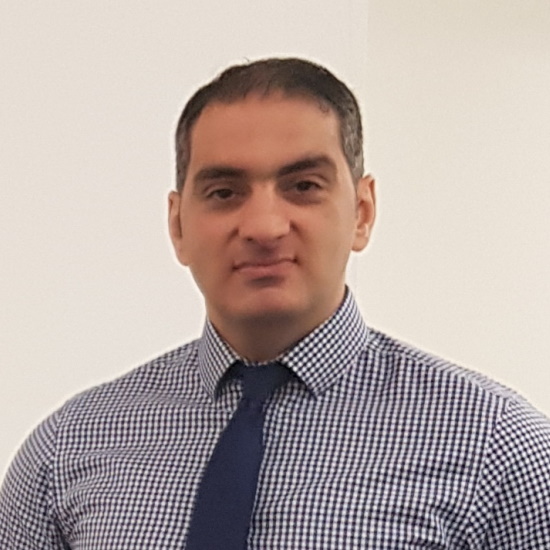
Dr Mohammad Mehdi Kashani, University of Southampton, UK

Dr Mohammad Mehdi Kashani, University of Southampton, UKDr Kashani is Associate Professor of Structural Engineering within the School of Engineering at University of Southampton (UoS). He obtained his PhD is 2014 from University of Bristol (UoB) in seismic performance assessment of ageing concrete bridges. In 2013, he was a visiting scholar at the Civil and Environmental Engineering Department of University of Washington in the USA. His primary expertise is large-scale static and dynamic structural testing, modelling nonlinear behaviour and structural vulnerability analysis of complex structural systems, and residual life prediction of ageing structures and bridges. He is a committee member of the International Federation for Structural Concrete (fib) in Task Group 3 (assessment of existing deteriorated concrete structures). His models for assessment of corrosion damaged reinforced concrete structures are being implemented in the new fib standard for design and assessment of concrete structures (Model Code 2020). |
| 13:15 - 13:20 | Questions |
| 13:20 - 13:25 |
Discussion contribution – Fatigue cracking of viscoelastic bitumen for asphalt roads
Fatigue cracking is one of the main distresses in asphalt roads. Bitumen, a binder in asphalt mixtures that pave the road surface layers, fundamentally determines the resistance to the fatigue cracking. This study presents mechanical models for quantifying the initiation and propagation of the fatigue cracking in bitumen. A dynamic shear rotational cracking (DSR-C) model was derived based on viscoelastic damage mechanics to predict the cracking length in bitumen when subjected to a rotational shear fatigue load. The DSR-C model was proved, by comparing with time sweep fatigue test results, being capable of accurately predicting the cracking length at different temperatures, frequencies, loading and aging conditions. A viscoelastic Griffith model was derived as a crack initiation criterion, which was validated by surface energy measurements based on contact angle tests. A pseudo J-integral based Paris’ Law was employed to obtain the crack propagation speed for the fatigue crack growth. The model coefficients were determined from the steady stage of crack growth curve and proved to be material properties that are temperature dependent but independent of loading amplitudes or frequencies. Future study will be focused on defining fatigue failure to determine fatigue life of the bitumen. 
Dr Yuqing Zhang, Aston University, UK

Dr Yuqing Zhang, Aston University, UKDr Yuqing Zhang is a senior lecturer in highway engineering at the Department of Civil Engineering of Aston University in Birmingham, UK. His research is focused on mechanics-based multiscale and multiphysics modelling of road materials and structures, renewable materials for sustainable roads and intelligent technologies for future transport infrastructures. As a principal investigator, Dr Zhang has led research projects funded by European Commission’s Horizon 2020, Royal Society, Royal Academy of Engineering, British Academy and asphalt industries. Dr Zhang now serves on the steering committee of the UK’s National Asphalt Research Consortium (NARC) and is an active member on ISAP, TRB, EATA and RILEM. Dr Zhang is also a Theodore von Kármán Fellow at RWTH Aachen University, Germany. |
| 13:25 - 13:30 |
Discussion contribution – Toughening epoxy with oxide nanoparticles
Over the past three decades, toughening of epoxy polymers by oxide nanoparticles gained significant attention. The brittle nature of epoxy polymers limits their use in advanced structural applications where safety is a major concern. Rigid spherical oxide nanoparticles offered several advantages over other nanostructures for reinforcing epoxy polymers such as low toxicity, non-conductivity, availability, economical, and low aspect ratio (∼1) making them easy to disperse in viscus or semi-viscous polymers. Ultrasonic dual mixing (UDM) offered novel prospects to improve the mechanical properties of nanoparticles-reinforced epoxy composites by organized dispersion of oxide nanoparticles. The tensile fracture displayed a strong epoxy-nanoparticle interface that led to the enhanced mechanical properties due to leading toughening mechanisms such as crack deflection, plastic deformation, and particle pullout. However, single-edge-notch 3-point-bending (SENB) fracture revealed significant enhancement in the fracture toughness and fracture energy due to crack deflection, plastic deformation, crack front bowing and crack pinning toughening mechanisms. The oxide nanoparticles have an inordinate competence to toughen the epoxy polymers. 
Associate Professor Manjeet Singh Goyat, University of Petroleum & Energy Studies, India

Associate Professor Manjeet Singh Goyat, University of Petroleum & Energy Studies, IndiaManjeet Singh Goyat received his MSc in Physics in 2006 and MTech in Nano Science & Technology in 2008 from Guru Jambheshwar University of Science and Technology, India. He received his PhD in Materials Engineering from the Indian Institute of Technology Roorkee in January 2014. He currently is an Assistant Professor in the Department of Applied Science at the University of Petroleum and Energy Studies. His research focuses on polymer matrix nanocomposites, self-healing polymer matrix composites, hybrid polymer nanocomposites, nanomaterial synthesis and functionalization, process optimization, superhydrophobic coatings for self-cleaning and anti-corrosion applications. He published more than 40 research papers in peer-reviewed journals and delivered 8 scientific talks at conferences. He is a reviewer of international research proposals and reviewed research proposals for Qatar University. He currently is serving as a Guest Editor of Frontiers in Materials Journal for Special Issue: Next Generation Natural and Synthetic Filler-based Polymer Nanocomposites. |
| 13:30 - 13:35 |
New tough ceramics via graphene based reinforcements
Over the past decade, a new family of ceramic matrix composites has been developed from the incorporation of homogeneously dispersed graphene-based fillers (graphene nanoplateles, graphene oxide sheets, or graphene nanoribbons) into the ceramic matrix. These composites have shown a significant increment of their fracture toughness accompanied by other electrical and thermal functionalities, which make them potentially attractive for a wide range of applications. Here, the principal observations on the reinforcing mechanisms responsible for this improvement are briefly reviewed, discussing the relation with graphene platelets orientation, morphology, and functionalization. 
Dr Cristina Ramírez, Institute of Ceramics and Glass, ICV-CSIC, Spain

Dr Cristina Ramírez, Institute of Ceramics and Glass, ICV-CSIC, SpainCristina Ramírez has studied Physics at Universidad de Costa Rica and Universidad Autónoma de Madrid (UAM). After completing her PhD in Materials Science and Nanotechnology at UAM, she joined the Brown University School of Engineering with a 2-year postdoctoral position. Since 2018, she has been working as a postdoctoral researcher in the Technical Ceramics Group of the Institute of Ceramics and Glass in Madrid. Her main research interests are focused on the use of carbon nanomaterials, and in particular, graphene-based nanostructures as reinforcements for bulk and 3D printed ceramic composite structures. |
| 13:35 - 14:15 | Discussion |
| 14:15 - 14:30 | Break |
Chair

Professor Rob Ritchie FREng ForMemRS, University of California, Berkeley, USA

Professor Rob Ritchie FREng ForMemRS, University of California, Berkeley, USA
Robert O Ritchie is the H.T. & Jessie Chua Distinguished Professor of Engineering in the Departments of Materials Science & Engineering and Mechanical Engineering at the University of California in Berkeley, and Senior Faculty Scientist at the Lawrence Berkeley National Laboratory. Prior to joining Berkeley in 1981, he was Associate Professor of Mechanical Engineering at MIT. He received MA, PhD and ScD degrees all from Cambridge University. He is known for his research into the mechanics and mechanisms of fracture and fatigue in a broad range of structural and biological materials. His current interests are focused on high-entropy alloys and bulk-metallic glasses, the mechanical properties of natural materials, including skin and bone, and the development of bioinspired structural materials. He is a member of the US National Academy of Engineering.
| 14:30 - 14:40 |
Review of defects in the Griffith theory

Professor Rob Ritchie FREng ForMemRS, University of California, Berkeley, USA

Professor Rob Ritchie FREng ForMemRS, University of California, Berkeley, USARobert O Ritchie is the H.T. & Jessie Chua Distinguished Professor of Engineering in the Departments of Materials Science & Engineering and Mechanical Engineering at the University of California in Berkeley, and Senior Faculty Scientist at the Lawrence Berkeley National Laboratory. Prior to joining Berkeley in 1981, he was Associate Professor of Mechanical Engineering at MIT. He received MA, PhD and ScD degrees all from Cambridge University. He is known for his research into the mechanics and mechanisms of fracture and fatigue in a broad range of structural and biological materials. His current interests are focused on high-entropy alloys and bulk-metallic glasses, the mechanical properties of natural materials, including skin and bone, and the development of bioinspired structural materials. He is a member of the US National Academy of Engineering. |
|---|---|
| 14:40 - 14:55 |
Making and breaking diamond laminates
Diamond foils are exceptionally strong yet brittle. One approach to make ceramic foils less susceptible to brittle fracture is to introduce interfaces into the material that provide pathways for crack deflection. The group tries to produce strong yet tough diamond/metal laminates (DMLs) from freestanding diamond foils using a brazing process or by alternating coating processes CVD (diamond) and PVD (metal). The mechanical behaviour was characterized via three-point bending (3PB) where the brazed laminates exhibit step-like fracture. Crack deflection at interfaces induces toughening within the laminates. At approx. 3.0 MJ/m3 diamond/metal laminates exhibit more than twice the fracture energy of monolithic diamond foils while maintaining 90% stiffness and about 70% nominal strength. The group finds that the diamond-to-metal interface plays a critical role: it must be strong enough to enable the transfer of shear stress, while being weak enough to deflect a crack. 
Professor Stefan Rosiwal, Friedrich-Alexander Universität, Germany

Professor Stefan Rosiwal, Friedrich-Alexander Universität, GermanyStefan Maria Rosiwal leads the research group for 'Ultra-Hard Coatings' at the University of Erlangen-Nürnberg, chair of Material Science and Engineering for Metals. At the Department of Materials Science in Erlangen he received his PhD in 1994 with the title 'Principals and technical application opportunities for differential reflectometry for fast and non-destructive surface analysis'. The habilitation followed in 2015 with the title 'CVD Diamond Coating on Metals'. He was the executive managing director of different Bavarian research networks for 'Surface, Layers and Drying technology' (FOROBI+II) and for 'Carbon Based Materials' (FORCARBON). He is Co-founder of the WTM spin-off company Fa. DiaCCon GmbH, Fürth, Germany, which is the world-leading producer for CVD diamond electrodes. In 2010 he got the Max Grundig Award of the Max Grundig Foundation, Fürth, for his research and development of new materials and processes. Stefan's research interest is focused on CVD coatings (diamond, Borides and carbides and nitrides of Tantalum or Titanium) on metals (Steel, Titanium, Niobium etc.). Furthermore he develops new thermoelectric generators based on doped diamond-graphene foils. |
| 14:55 - 15:00 | Questions |
| 15:00 - 15:15 |
Trains and boats and planes: living with cracks in transport
Our increased understanding of the micro-scale mechanisms involved in crack extension has been gained under extremely well-defined laboratory conditions. Applying this fund of knowledge to real problems is by no means trivial. This presentation will illustrate some of the difficulties by using examples from various transport applications. The greatest benefit has been the use by the aircraft industry which has learned to live with cracks whist at the same time increasing performance. Shipping, on which world trade depends, has only recently adopted modern analysis of cracks in design and life evaluation, but big issues remain in an industry where cracks can be measured in metres rather than microns. Railways are perhaps the most conservative of industries yet were responsible for the identification and early attempts to analyse fatigue at their inception around 1840. The particular conditions of the wheel rail interface, influence damage in rails, wheels and axles. The key lies in defining material properties which mirror those which reflect service conditions: this similitude is difficult to achieve if the global let alone local, loading conditions are unknown. It is the author’s experience that this knowledge is ill defined in many applications. Failures are often associated with competing mechanisms, fatigue, corrosion, wear, creep etc. The measurement of the dimensions of cracks in real components still remains challenging. The need to reduce weight, save fuel and reduce emissions has led to increasing pressures to design lighter structures by using lighter materials, which themselves present new challenges in property definition, fabrication and joining. 
Professor Roderick Smith FREng, Imperial College London, UK

Professor Roderick Smith FREng, Imperial College London, UKProfessor Roderick A Smith FREng, is currently Emeritus Professor of Railway Engineering, Imperial College London and Chair of the Future Railway Research Centre. He was Chief Scientific Advisor to the Department for Transport from 2012 to 2014 and was 126th President of the Institution of Mechanical Engineers from 2011 to 2012. He is currently an Infrastructure Commissioner for Wales. He was previously a lecturer in the Cambridge University Engineering Department (1980–88) and Professor of Mechanical and Process Engineering, University of Sheffield (1988–2000), including a period as Head of Department (1992–95) , Head of Mechanical Engineering at Imperial College (2000–2005). He is frequently called as an expert witness in legal cases. He works with many major railway organisations in Japan. He has published extensively on structural integrity, railway engineering and energy. He is director of his own consulting company, and has advised on many engineering issues throughout the world. |
| 15:15 - 15:20 | Questions |
| 15:20 - 15:25 |
Discussion contribution – Paradox: defects can toughen adhesives
Highly-crosslinked epoxy polymers are widely used as structural adhesives in very demanding engineering applications. Such thermosetting polymers have many excellent properties such as high stiffness, good creep resistance and good thermal properties. However, their crosslinked microstructure tends to make them very brittle materials. Nevertheless, the controlled formation of well-dispersed defects, such as micro-voids, in these adhesives may lead to a significant increase in their toughness. The main toughening mechanisms that are initiated via the formation of such micro-voids are identified. It is then shown how these observations have led to a wide range of epoxy adhesives which are significantly toughened via the addition of rubbery, nano-silica and nano-carbon, etc. particles. 
Professor Anthony Kinloch FREng FRS, Imperial College London, UK

Professor Anthony Kinloch FREng FRS, Imperial College London, UKProfessor Tony Kinloch, FREng FRS holds a personal chair as ‘Professor of Adhesion’ in the Department of Mechanical Engineering at Imperial College London. He started his career as a research scientist for the UK Ministry of Defence in 1972. He joined Imperial College London in 1984, and was Department Head from 2007 to 2012. He has published over three hundred and fifty patents and refereed papers and has been awarded the ‘Armourer’s and Braziers Prize for Materials Science’ from The Royal Society, the ‘Le Prix Dédale de la Sociéte Française d’Adhesion’ from the French Adhesion Society, the ‘Hawksley Gold Medal’ of the Institution of Mechanical Engineers, ‘The Griffith Medal’ from the Institute of Materials and the US Adhesion Society 3M Award for ‘Outstanding Excellence in Adhesion Research’. In 1997 he was elected a Fellow of the Royal Academy of Engineering (FREng) and in 2007 was elected a Fellow of The Royal Society (FRS). |
| 15:25 - 15:30 |
Discussion contribution – Toughness of wood and wood composites
Wood is essentially a porous 'all-polymer' nanocomposite of high degree of anisotropy. We experience wood as a very tough material, and the high toughness for crack growth perpendicular to the orientation of fibres is well established. Recently, transparent wood biocomposites have been fabricated intended for building applications, where the pore space of wood is filled with a polymer of suitable refractive index. For large structures, the toughness in the weakest crack growth direction is critical and results from such a study are presented. A four-point bending test allowing stable crack growth in transparent wood is carried out, and the analysis is based on crack bridging laws. Digital image correlation measurements of the strain field are combined with finite element modeling to estimate elastic constants of the orthotropic wood composite during the fracture test. Crack bridging laws are estimated for three different materials. Somewhat unexpectedly, addition of a polymer matrix is not improving toughness of transparent wood, and micromechanisms of crack growth are discussed in order to explain this. The complexity of wood and wood composites makes engineering design more difficult, although it also creates opportunities for tailored combinations of strength and toughness in biocomposites which of great interest for sustainable development in the building sector. 
Professor Lars Berglund, KTH Royal Institute of Technology, Sweden

Professor Lars Berglund, KTH Royal Institute of Technology, SwedenLars Berglund is Professor of Wood and Wood Composites at KTH Royal Institute of Technology in Stockholm. He has been a visiting researcher at Stanford University, Cornell University and Kyoto University. His research interest is in nanostructured composite materials; primarily those based on cellulose. An important challenge is transparent cellulosic nanomaterials, which also can serve as load-bearing engineering materials. Professor Berglund has published more than 300 journal papers, obtained around 10 patents, examined more than 20 PhDs and is a member of the Royal Swedish Academy of Engineering Sciences. He holds an ERC Advanced Grant on Nanotechnologies for Transparent Wood. He is a 'highly cited' author on Web of Science, has more than 21,000 citations and an H-index of 70. |
| 15:30 - 16:00 | Discussion |
Chair

Professor Anthony Kinloch FREng FRS, Imperial College London, UK

Professor Anthony Kinloch FREng FRS, Imperial College London, UK
Professor Tony Kinloch, FREng FRS holds a personal chair as ‘Professor of Adhesion’ in the Department of Mechanical Engineering at Imperial College London. He started his career as a research scientist for the UK Ministry of Defence in 1972. He joined Imperial College London in 1984, and was Department Head from 2007 to 2012. He has published over three hundred and fifty patents and refereed papers and has been awarded the ‘Armourer’s and Braziers Prize for Materials Science’ from The Royal Society, the ‘Le Prix Dédale de la Sociéte Française d’Adhesion’ from the French Adhesion Society, the ‘Hawksley Gold Medal’ of the Institution of Mechanical Engineers, ‘The Griffith Medal’ from the Institute of Materials and the US Adhesion Society 3M Award for ‘Outstanding Excellence in Adhesion Research’. In 1997 he was elected a Fellow of the Royal Academy of Engineering (FREng) and in 2007 was elected a Fellow of The Royal Society (FRS).
| 08:00 - 08:15 |
Advances in composites cracking principles

Professor Anthony Kinloch FREng FRS, Imperial College London, UK

Professor Anthony Kinloch FREng FRS, Imperial College London, UKProfessor Tony Kinloch, FREng FRS holds a personal chair as ‘Professor of Adhesion’ in the Department of Mechanical Engineering at Imperial College London. He started his career as a research scientist for the UK Ministry of Defence in 1972. He joined Imperial College London in 1984, and was Department Head from 2007 to 2012. He has published over three hundred and fifty patents and refereed papers and has been awarded the ‘Armourer’s and Braziers Prize for Materials Science’ from The Royal Society, the ‘Le Prix Dédale de la Sociéte Française d’Adhesion’ from the French Adhesion Society, the ‘Hawksley Gold Medal’ of the Institution of Mechanical Engineers, ‘The Griffith Medal’ from the Institute of Materials and the US Adhesion Society 3M Award for ‘Outstanding Excellence in Adhesion Research’. In 1997 he was elected a Fellow of the Royal Academy of Engineering (FREng) and in 2007 was elected a Fellow of The Royal Society (FRS). |
|---|---|
| 08:15 - 08:20 | Questions |
| 08:20 - 08:35 |
Impact of CFRP composites
Experimental and theoretical modelling studies on the behaviour of continuous carbon-fibre/polymer matrix composites subjected to a relatively low velocity or high-velocity impact, using a rigid, metallic impactor. Drop-weight and gas-gun tests are employed to undertake the low-velocity and high-velocity impact experiments, respectively. The carbon fibre composites are based upon a thermoplastic poly (ether-ether ketone) matrix (termed CF/PEEK) or a thermoset toughened-epoxy matrix (termed CF/Epoxy). The results clearly reveal that the CF/PEEK composites exhibit the better impact performance. A three-dimensional (3-D) Finite Element Analysis (FEA) model incorporating an elastic-plastic (EP) damage model is developed to simulate the impact response of carbon-fibre reinforced-plastic (CFRP) composites. To validate the predictive capability of the model, experimental results are obtained from relatively low-velocity impact tests on CFRP plates employing either a matrix of a thermoplastic polymer, ie poly(ether-ether ketone), or a thermosetting epoxy polymer. The developed 3-D EP model is shown to model successfully the experimentally-measured impact behaviour of the CFRP composites. 
Professor John Dear, Imperial College London, UK

Professor John Dear, Imperial College London, UKProfessor John Dear has been an academic for over 30 years in the Department of Mechanical Engineering at Imperial College London. Prior to joining Imperial in 1988, John was an SERC Research Fellow at the Cavendish Laboratory, Cambridge University where he did his first degree and PhD. John has been successful in obtaining research grants from the UK and US Government (EPSRC, ONR, MRC and DTI/TSB), European Commission, UK and overseas companies. He is Director of the BIAM Centre, at Imperial College London and Executive Joint Director of the AVIC Centre, at Imperial College London. His research expertise is structural integrity of composite and other materials, including manufacturing and micro-structural effects. He is Associate Editor of the International Journal of Lightweight Materials and Manufacture. In 2019, John was appointed Honorary Professor of Xi'an Jiaotong University. He has published over 150 journal papers, 220 conference papers, contributed to 18 books, supervised 65 PhDs and 24 RAs. |
| 08:35 - 08:40 | Questions |
| 08:40 - 08:55 |
Computational modelling of CFRP composites for crashworthiness assessment
The airframes of the latest generation of wide-body passenger aircraft are primarily made from CFRP composites and estimated to be around 20% lighter than their aluminium counterpart, delivering a commensurate reduction in fuel consumption. As the industry transitions towards zero-emissions flight, further emphasis is being placed on reducing structural weight. A similar challenge faces the automotive industry where the comparatively heavier electric powertrain, compared to an internal combustion engine powertrain, is driving major lightweighting research and development programmes. The aerospace and automotive industries have been at the forefront of incorporating computational modelling to reduce the cost of product development and certification. The use of composites has brought with it a new set of challenges in developing reliable and robust simulation tools. Modelling the energy absorbing capacity of composite structures undergoing crushing, is particularly challenging. This paper provides an overview of recent developments in the computational modelling of composite crushing. Numerical strategies to enhance accuracy and robustness are presented. The fidelity of the numerical solution is highly dependent on the reliability of the material data generated from appropriate material characterisation tests. Not all such tests conform to an agreed standard and the testing at different strain rates presents additional complexity. Approaches for scaling up the computational models are also discussed. 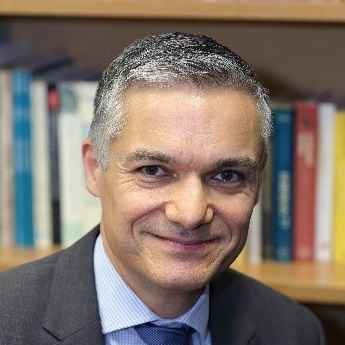
Professor Brian Falzon, Queen’s University Belfast, UK

Professor Brian Falzon, Queen’s University Belfast, UKProfessor Brian G Falzon joined Queen’s University Belfast’s School of Mechanical and Aerospace Engineering, in 2013, as the RAEng – Bombardier Chair in Aerospace Composites and is currently Head of School. In September 2021, Professor Falzon will take up the role of Director of the Victorian Space Industry Hub at RMIT University in Melbourne, Australia. He previously held academic appointments at Monash University and Imperial College London. His early work had a significant influence on innovative designs subsequently implemented on the Australian Boeing 787 and FA-18E/F programs. He helped develop new structural modelling capability for the UK Ministry of Defence Eurofighter programme, and the UK government-backed research program, ‘Next Generation Composite Wing’. Falzon’s work on damage modelling and characterization was used on the NASA Advanced Composites Project and various projects with Bombardier Aerostructures Belfast (now Spirit AeroSystems) have led to technologies being incorporated in current and planned future programmes. |
| 08:55 - 09:00 | Questions |
| 09:00 - 09:15 |
Reinforcing polymers with low dimensional nanocarbons
Graphene, given its excellent intrinsic properties, should be an ideal reinforcement for stiffening, strengthening and toughening polymeric matrices. However, the reported performance of graphene reinforced elastomers, thermoplastics and thermosets is found to vary significantly in the literature. This talk will explore the challenge in realising the promise of graphene, and hence by extension other nanomaterials, through the characterisation and testing of model polymer composite systems, measuring interfacial micromechanics using Raman spectroscopy and analytical models. In particular, the roles of graphene morphology and dispersion and the nature of the graphene-polymer interface will be discussed. 
Professor Ian Kinloch, University of Manchester, UK

Professor Ian Kinloch, University of Manchester, UKIan Kinloch holds the Morgan Advanced Materials/Royal Academy of Engineering Research Chair in Carbon Materials, having previously held an EPSRC Challenging Engineering and EPSRC/RAEng Research Fellowships. Together with Dr Bissett, Dr Valles and Professor Young, he co-leads the Advanced Nanostructures Group which spans the National Graphene Institute, Henry Royce Institute and the Department of Materials at the University of Manchester. His research follows nanomaterials from their production through to their processing and ultimately to applications. This vertically integrated approach means that the appropriate materials can be processed into the optimum architecture for a given application, enabling new materials to realise their potential. Applications studies focus on composites and electrochemical power storage. |
| 09:15 - 09:20 | Questions |
| 09:20 - 09:25 |
Discussion contribution – Fracture and fatigue delamination propagation in DCB specimens: comparison of two material systems
Double cantilever beam (DCB) specimens composed of carbon fibre reinforced polymer laminate composites were tested. Two material systems were investigated. In the first, the specimens were fabricated from 15 plies of a plain woven prepreg (G0814/913) arranged in a multi-directional (MD) layup. The plies alternated with yarn in the 0°/90°- directions and +45°/-45°- directions with the delamination between these two ply types. For the second material type, the specimens were fabricated from 19 plies with the delamination between a unidirectional fabric and a woven ply with yarn in the +45°/-45°- directions. The remainder of the plies were woven, with yarn alternating between the 0°/90° and +45°/-45°- directions. This laminate was produced by means of a wet-layup. Fracture toughness resistance curves, as well as fatigue delamination propagation properties were determined. A master curve based on the Hartman-Schijve approach to fatigue was found for each material system. It was seen that fatigue delamination propagation in the wet-layup is faster than that in the prepreg. 
Professor Leslie Banks-Sills, Tel Aviv University, Israel

Professor Leslie Banks-Sills, Tel Aviv University, IsraelLeslie Banks-Sills is a Professor Emerita at Tel Aviv University. She completed a PhD at Harvard University in 1977 and a post-doc at Brown University in 1978. She has spent time at Harvard University, Wright Patterson Air Force Base, the Nuclear Research Center in Karlsruhe, Cornell University, Lund University, Kyoto University and Brescia University. Among awards received are the Griffith Medal and an Honorary Doctorate from Lund University. Her research interests include the use of analytical, numerical and experimental methods to treat fracture problems which include homogeneous materials, bonds, interfaces and composites. Recently she and her group have been examining the propagation of delaminations in cross-ply and woven composites. She has published over 100 papers in international journals, two books and guided over 50 graduate students. |
| 09:25 - 09:30 |
Discussion contribution – Viscoelastic matrix of natural composites
Natural fibrous composites including wood, bone, skin, insect cuticle, etc are supplemented by the matrix composed (depending on particular biological material) of proteins, lipids, lignin. The matrix of biological composites is often hydrated and has tight bond to the fibres (and that is why it has strong adhesive properties) and viscoelastic behaviour. In this presentation, a short overview about matrices of different biological composites will be provided and more detailed information on propolis, which is a sticky substance used by bees to seal their hive and protect the colony against pathogens will be discussed. 
Professor Stanislav Gorb, Kiel University, Germany

Professor Stanislav Gorb, Kiel University, GermanyStanislav Gorb is Professor and Director at the Zoological Institute of the Kiel University, Germany. He received his PhD degree in zoology and entomology at the Institute of Zoology of the Ukrainian Academy of Sciences in Kiev, Ukraine. Gorb was a postdoctoral researcher at the University of Vienna, Austria, a research assistant at University of Jena, a group leader at the Max Planck Institutes for Developmental Biology in Tübingen and for Metals Research in Stuttgart, Germany. Gorb’s research focuses on morphology, structure and biomechanics in animals and plants, as well as the development of biologically inspired technological surfaces and systems. In 2018, he received Karl-Ritter-von-Frisch Medal of German Zoological Society. Gorb is Corresponding member of Academy of the Science and Literature Mainz, Germany and Member of the National Academy of Sciences Leopoldina, Germany. Gorb has authored several books, more than 500 papers in peer-reviewed journals, and five patents. |
| 09:30 - 10:00 | Discussion |
| 10:00 - 10:15 | Break |
Chair

Dr Sivasambu Bohm, Imperial College London, UK

Dr Sivasambu Bohm, Imperial College London, UK
Dr Sivasambu Bohm received his first degree in Chemical Engineering, followed by an MSc at Hahn Meitner Institute (Max Planck Institute) in Berlin. After gaining his PhD at the University of Bath in Chemistry, he worked at different academic institutions, University of Swansea, TU Delft, The University of Birmingham and India Institute of Technology, Bombay. Siva has 20 years of industrial experience (TATA, Talga, CAMI and AM) in various research fields; metallurgy, protective coatings, energy storage in the automotive industry, smart coatings and nanotechnology, synthesis and applications of graphene. Dr Bohm has published 30 patents and 94 scientific publications. He is a Fellow of the Royal Society of Chemistry and a Fellow of Technical Surface Coatings. Dr Bohm has been awarded the Royal Society Industry Fellowship initial at University of Cambridge, Cambridge Graphene Centre. Since 2020, Dr Bohm has been completing his final year of a fellowship at Imperial College London and AM Commercial UK Ltd.
| 10:15 - 10:30 |
Applicability of AFM to cancer-related cell changes
Biomechanics-related changes have been recognised to be crucial in various pathologies. It ranges from diseases where the mechanical change is evident due to genetic modifications of cytoskeleton-membrane linkage like in muscular dystrophies to those where the alterations are only experimentally observed, eg in cancer. The determination of mechanical properties of living cells as an indicator of cancer progression has become possible with the development of such local measurement techniques as atomic force microscopy (AFM). Its most important advantage is a nanoscopic character implying that very local alterations can be quantified. In this research, AFM-derived mechanical properties of single cells and tissues have been studied in the context of cancer development. The results gathered from AFM measurements of various cancers show that, for most cancers, individual cells are characterised by the lower apparent Young’s modulus, denoting higher cell deformability. Its value depended on various factors, like the properties of substrates used for cell growth, force loading rate, or indentation depth. Despite this, the results proved the AFM capability to recognise mechanically altered cells. This can significantly impact the development of methodological approaches toward the precise identification of pathological cells. They would allow for more effective detection of cancer-related changes. 
Professor Małgorzata Lekka, Institute of Nuclear Physics, Polish Academy of Sciences, Poland

Professor Małgorzata Lekka, Institute of Nuclear Physics, Polish Academy of Sciences, PolandProfessor Małgorzata Lekka is the head of the Department of Biophysical Microstructures at the Institute of Nuclear Physics, Polish Academy of Sciences (IFJ PAN, Cracow, Poland). She is a member of the Interdisciplinary PhD Studies Council Board (InterDokMed). She studied physics at the Jagiellonian University in Cracow. In 1998, she obtained a PhD at the IFJ PAN. Her thesis focused on the mechanical properties of cancer cells, studied by atomic force microscopy (AFM). From 2004 – 2006, she was a NATO scholarship holder at the Ecole Polytechnique Federale de Lausanne (EPFL). From 2006 to 2013, parallel to her duties at the IFJ PAN, she conducted research at the EPFL. Her research focuses on the biomechanics of cells and tissues as indicators of various pathologies, with a strong emphasis on developing AFM as a tool for studying cancer-related changes. She has published more than 100 papers devoted to AFM applications in biology/biomedicine. |
|---|---|
| 10:30 - 10:35 | Questions |
| 10:35 - 10:50 |
Bone fracture
The structure of human cortical bone evolves over multiple length-scales from its nanoscale collagen and hydroxyapatite constituents to osteonal structures at near-millimetre dimensions. To resist fracture, bone’s toughness derives intrinsically through plasticity (fibrillar sliding) at structural-scales below a micron and extrinsically through mechanisms (crack deflection/bridging) at larger structural-scales. Biological factors, eg, ageing and bone diseases such as vitamin-D deficiency and osteogenesis imperfecta, can diminish fracture resistance over multiple length-scales by degrading both bone’s intrinsic and extrinsic toughness. The issue of bisphosphonates for treating osteoporosis will also be addressed and how these drugs can lead to atypical femoral fractures (AFFs) in a small percentage of patients who are susceptible to this drug. Bisphosphonates are excellent for treating the issue of bone quantity, but with respect to bone quality, the toughening mechanisms in bone biopsies taken from people with AFFs are clearly affected; specifically, AFFs are found to be associated intrinsically with diminished fibrillar sliding due to excessive cross-linking, and extrinsically with diminished crack deflection associated with increased, more homogenized, mineralization. 
Professor Rob Ritchie FREng ForMemRS, University of California, Berkeley, USA

Professor Rob Ritchie FREng ForMemRS, University of California, Berkeley, USARobert O Ritchie is the H.T. & Jessie Chua Distinguished Professor of Engineering in the Departments of Materials Science & Engineering and Mechanical Engineering at the University of California in Berkeley, and Senior Faculty Scientist at the Lawrence Berkeley National Laboratory. Prior to joining Berkeley in 1981, he was Associate Professor of Mechanical Engineering at MIT. He received MA, PhD and ScD degrees all from Cambridge University. He is known for his research into the mechanics and mechanisms of fracture and fatigue in a broad range of structural and biological materials. His current interests are focused on high-entropy alloys and bulk-metallic glasses, the mechanical properties of natural materials, including skin and bone, and the development of bioinspired structural materials. He is a member of the US National Academy of Engineering. |
| 10:50 - 10:55 | Questions |
| 10:55 - 11:00 |
Discussion contribution – Drying of blood droplets
When a drop of blood is placed on a solid substrate and dried a range of morphologies are observed, with many similarities to regular dried colloidal dispersions. As with regular colloidal dispersions a front of consolidated material appears at the edge and propagates horizontally across the droplet, towards the centre. For blood, this consolidation front appears to halt a set distance from the edge and this is ascribes to gelation of the bulk fluid. For the fully dried droplet, an accumulation of material at the edge is often observed, called a coffee ring. This edge ridge appearance is dependent on the original volume fraction of solid material as well as the drop-substrate contact angle. Theoretical predictions have been made for regular dispersions with decent agreement between theory and experiment. For blood there is considerable discrepancy in the morphological prediction which is ascribed the protein induced Marangoni flow. Cracks are observed within the central region of the droplet, which is assumed to have gelled. The density of cracks seems to vary between patients according to their physiology. 
Professor Alex Routh, University of Cambridge, UK

Professor Alex Routh, University of Cambridge, UKProfessor Alex Routh has BA and MEng degrees in Chemical Engineering from the University of Cambridge and a PhD from Princeton University in the United States. He was a post-doc in the School of Chemistry at the University of Bristol and in 2006 was appointed as a lecturer in the Chemical Engineering & Biotechnology Department at the University of Cambridge. He was promoted to full professor in 2017. His position is a joint appointment with the BP Institute for Multi-Phase Flow, which is a multi-disciplinary research institute spanning the physical sciences. Alex Routh’s research is in the field of colloid science and he has worked in the areas of encapsulation, dispersion stability, formulation and drying. Within the film drying topic, Professor Routh has been active for the past 20 years and has published extensively in the specifics of film cracking and the flows within thin films. |
| 11:00 - 11:05 |
Discussion contribution – 3D printing for orthopaedic fracture fixation
Osteoporosis is a condition which causes bones to lose strength and density and can cause fragility fractures. Worldwide, around 1 in 3 women and 1 in 5 men aged over 50 will experience a fragility fracture due to osteoporosis. However, current orthopaedic screws are often poorly suited to osteoporotic bone and the design and test process for new screw designs is inhibited by the highly expensive manufacturing process and long lead time. In this study Dr Leslie shows that the use of 3D printing can be a valid method of rapidly and cheaply producing a variety of different screw designs to test efficacy before taking those designs on for further testing. Six different wood screws were reverse-engineered and 3D printed in polymeric resin on a Stereolithography (SLA) machine. These printed wood screws and their equivalent metal counterparts were inserted into synthetic bone blocks (Sawbones PCF5 and PCF10). Pull-out tests were conducted in accordance with ASTM 543-13. Results showed a correlation between five of the six metal vs 3D printed tests. In addition, new orthopaedic screws were designed and tested which display a greater holding power in osteoporotic bone. 
Dr Laura Leslie, Aston University, UK

Dr Laura Leslie, Aston University, UKDr Laura Leslie is a Chartered Engineer and Member of the Institution of Mechanical Engineers. She has a PhD from the University of Birmingham in Biomedical Engineering where she investigated the mechanical properties of medical grade silicones for joint replacements in the human hand. She is currently Head of the Mechanical Engineering and Design group at Aston University and a member of the Aston Institute of Materials Research. Her current research interests include the development of novel in vitro models for drugs testing, the mechanical testing of new materials for fracture fixation plates and the use of 3D printing in early stage healthcare device prototype testing. |
| 11:05 - 11:10 |
Discussion contribution – Observing ice-cracks from space
Ice shelf instability and marine ice-cliff retreat are two mechanisms that lead directly to ice loss to the ocean. The rates of fracture associated with these mechanisms are the source of the largest uncertainties in the sea level projections used to plan coastal adaptation worldwide. Cracks extending tens of kilometres across ice shelves can be mapped from space using high-resolution optical and radar satellites such as Sentinel 1 & 2 (ESA) and TerraSAR-X (DLR), providing a catalogue of observations against which to test fracture models. Here Dr Marsh shows satellite imagery of pure tensile fractures, shear fractures, buckling and branching cracks, developing on ice shelves over timescales from days to decades. They discuss the large iceberg calving events from the Brunt Ice Shelf in February 2021 and the Ronne Ice Shelf in May 2021 and the development of the fractures leading to iceberg release. Spatial heterogeneity in fracture toughness and rheology are not well constrained, but the rapidly increasing availability of satellite data provides a route to better understanding these mechanisms. 
Dr Oliver Marsh, British Antarctic Survey, UK

Dr Oliver Marsh, British Antarctic Survey, UKOliver Marsh is a glaciologist at the British Antarctic Survey. He gained a PhD in Antarctic outlet glacier dynamics from the University of Canterbury in New Zealand in 2013, after which he was a postdoc at Scripps Institution of Oceanography, USA. He uses remote sensing and field observations to understand ice deformation, stress and fracture risk in ice shelves. His research also covers tidally-driven bending stresses in ice and their impact on flow at the inland margin of ice shelves. He has spent seven seasons working in Antarctica and, in his current role, is responsible for monitoring and modelling fracture hazards close to the British Antarctic Survey’s Halley Research Station on the Brunt Ice Shelf. |
| 11:10 - 11:30 | Discussion |
Chair
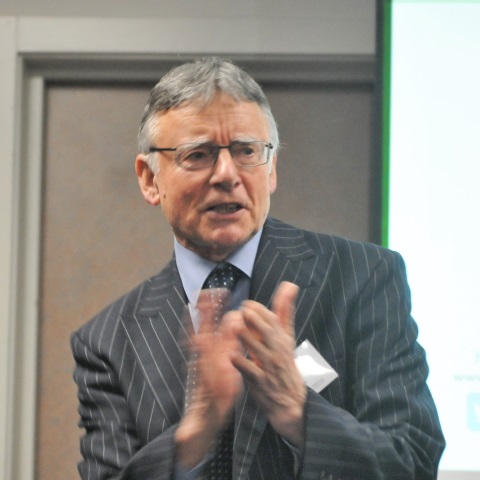
Dr Kevin Kendall FRS, Adelan Ltd, UK

Dr Kevin Kendall FRS, Adelan Ltd, UK
Kevin Kendall gained his PhD from the Cavendish Laboratory in 1970 for studies of contact and friction supervised by Professor David Tabor FRS. He then worked at British Railways in Derby on adhesion of iron oxide nanoparticles and became interested in fracture of adhesive joints, co-authoring the JKR paper with Johnson and Roberts. After post-docs in Australia and USA, he joined ICI in Runcorn and continued to pursue both theory and application of particle adhesion and cracking of polymers, cements and ceramics. Later he was Professor at Keele and Birmingham, where he started the ceramic fuel cell spin-out company Adelan Ltd, based on thermal-shock resistant zirconia.
| 12:15 - 12:30 |
Graphene production by cracking and industrial applications
Graphene has found its use in numerous industrial applications due to its unique properties. While its impermeable and conductive nature can replace currently used anticorrosive toxic pigments in coating systems, graphene can be an important component as a next-generation additive for many industrial applications. The current bottlenecks in using graphene and graphene oxide are the availability of cost-effective, high-quality materials from vein graphite and their effective incorporation into the product matrices. On overcoming these factors, graphene may attract significant demands in terms of volume consumption. Graphene can be produced on industrial scales and cost-effective top-down routes such as chemical, electrochemical, and/or high-pressure mechanical exfoliation. Graphene depending on end applications can be chemically tuned and modified via functionalisation so that easy incorporation into product matrices is possible. This paper discusses different production methods and their impact on the quality of graphene produced in terms of energy input. Graphene with an average thickness below five layers were produced by few methods with varied defects. However, a higher yield of graphene with a lower number of layers was produced by the high-pressure exfoliation route. Graphene additive role in Li-ion batteries will be discussed and commercial development of industrial energy storage applications. 
Dr Sivasambu Bohm, Imperial College London, UK

Dr Sivasambu Bohm, Imperial College London, UKDr Sivasambu Bohm received his first degree in Chemical Engineering, followed by an MSc at Hahn Meitner Institute (Max Planck Institute) in Berlin. After gaining his PhD at the University of Bath in Chemistry, he worked at different academic institutions, University of Swansea, TU Delft, The University of Birmingham and India Institute of Technology, Bombay. Siva has 20 years of industrial experience (TATA, Talga, CAMI and AM) in various research fields; metallurgy, protective coatings, energy storage in the automotive industry, smart coatings and nanotechnology, synthesis and applications of graphene. Dr Bohm has published 30 patents and 94 scientific publications. He is a Fellow of the Royal Society of Chemistry and a Fellow of Technical Surface Coatings. Dr Bohm has been awarded the Royal Society Industry Fellowship initial at University of Cambridge, Cambridge Graphene Centre. Since 2020, Dr Bohm has been completing his final year of a fellowship at Imperial College London and AM Commercial UK Ltd. |
|---|---|
| 12:30 - 12:35 | Questions |
| 12:35 - 12:50 |
The importance of interfacial shear: friction vs fracture
Just like cracking and fracture at material interfaces are significantly affected by the application of shear, the behaviour of frictional and adhesive contacts is also strongly affected and often controlled by the inherent resistance of the surfaces to applied tangential stresses. In this respect, there are many analogies between fracture and contact mechanics, with both fields being strongly affected by the mechanisms controlling how systems respond to interfacial shear, which is in turn governed by a plethora of physical, chemical and mechanical phenomena across scales. The talk will start by looking at key aspects of frictional contacts, including surface representations, the breakdown of continuum theories at the nano- and microscales, as well as multiscale and multiphysics aspects for analytical and computational models relevant to applications spanning a variety of sectors. The discussion will then move to the study of the interplay between interfacial shear stress, adhesion and deformations (especially for soft materials) in adhesive contact mechanics, which are rarely captured simultaneously at the local level and lead to diverse, sometimes contradicting, predictions in terms of evolution of contacting interfaces. Finally, methods using fracture mechanics techniques to study contacts will be critically reviewed, providing an overview of the advantages and limitations of cross-pollination between these two classical and yet everlasting fields. 
Professor Daniele Dini, Imperial College London, UK

Professor Daniele Dini, Imperial College London, UKProfessor Daniele Dini is Head of the Tribology Group in the Department of Mechanical Engineering at Imperial College London, where he is also Director of Research. He leads the advanced modelling research within the Tribology Group and collaborates closely with its experimentalists. His current individual research portfolio supports a large team of researchers focused on applied mechanics studies related to the modelling of tribological systems and materials. Most of these projects are multidisciplinary and range from atomic and molecular simulation of lubricant, additives and surfaces to the modelling of systems, such as machine and biomedical components. His group performs fundamental research, while successfully supporting the application of tribology in industry. Professor Dini is the recipient of various individual awards and is a Fellow of the IMechE, IoP and STLE. He has published over 250 journal articles and has been an EPSRC Established Career Fellow since 2016. |
| 12:50 - 12:55 | Questions |
| 12:55 - 13:00 |
Discussion contribution – Controlled interface cracking: 3D printing
In polyjet printing photopolymer droplets are deposited on a build tray, levelled off by a roller and cured by UV light. This technique is convenient to fabricate composites combining soft and stiff phases. Considering the layer‑by‑layer nature, interfaces between different photopolymers can be formed either before or after UV curing. The group characterized the properties of interfaces in 3D printed composites at different length-scales. They used nanoindentation to measure the spatial variation in mechanical properties across bimaterial interfaces at the micrometer level. It was found that interfaces formed by deposition after curing were sharp; whereas those formed before curing showed blending of the two materials over a length-scale bigger than individual droplet size. To characterize the impact of finite‑size interfaces, the group fabricated and tested composites having compliant and stiff layers alternating along different directions. Interface differences measured at the microscopic level had a macroscopic influence also on the mechanical behaviour both in bending and in tension. Eventually, the group produced bimaterial composites joined by an interface formed either before or after curing. Crack propagation along such interfaces was greatly influenced by the curing, as interfaces formed before curing were more resistant to crack opening with respect to interfaces formed after curing. 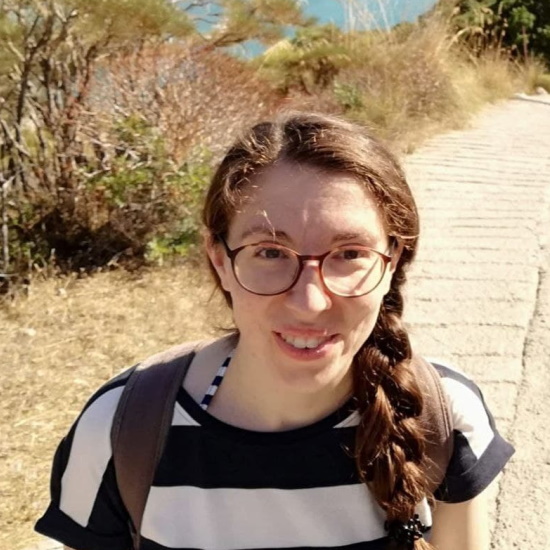
Dr Laura Zorzetto, University of Liège, Belgium and Max Planck Institute of Colloids and Interfaces, Germany

Dr Laura Zorzetto, University of Liège, Belgium and Max Planck Institute of Colloids and Interfaces, GermanyDr Laura Zorzetto is a postdoctoral researcher at Max Planck Institute for Colloids and Interfaces (Potsdam, Germany) in the group of Biofilm-based materials. Here, her research topic is the mineralization of biofilms, which are polymeric matrices produced by bacteria. Recently, she joined the newly DFG-funded research unit InterDent at Dentistry Department of Charité (Berlin, Germany). This multidisciplinary research group puts together knowledge from materials scientists and dental clinicians to develop new solutions for dental restorations. Previously, she obtained her PhD from the University of Liège (Belgium) with a thesis about the development of bio-inspired polymeric composites by 3D multimaterial printing. She gained her master degree in biomedical engineering from Politecnico di Milano (Italy) with a research about implantable and biodegradable drug-releasing hydrogels. Laura’s scientific approach consists in integrating experimental and numerical methods to develop and characterize innovative and non-conventional composites. Her main interests are soft composites and tough gels. |
| 13:00 - 13:05 |
Discussion contribution – Fluid-driven fractures in weak sands; a numerical approach
Weakly cemented granular materials or soft rocks are of great importance in many industrial and geological processes. They are intermediate between soils and rocks, sharing common characteristics with both. They have low strength and stiffness, poor core integrity and stress dependent porosity and permeability. Fluid-driven fractures in these materials are generally shaped as flow channels (narrow paths presenting higher permeability than the matrix) with some degree of branching. The group has found that there is an interplay between material strength and its (inhomogeneous) stress distribution underlying the behaviour of fracture development. Here Dr Gago will discuss this interplay. To this end, numerical simulations and high-performance computing were used. 
Dr Paula Gago, Imperial College London, UK

Dr Paula Gago, Imperial College London, UKPaula Gago obtained her PhD in Physics in the year 2014, from the University of La Plata, Argentina. After graduation she started working as a postdoctoral researcher in the Department of Earth Science and Engineering of Imperial College London. Her studies focus on the behaviour or particulate materials, highly disordered systems, affected under different perturbations. During the last 4 years, it was focused on the understanding of fracture behaviour of weakly cemented granular materials or soft rocks under the stress created by fluid injection. |
| 13:05 - 13:30 | Discussion |
| 13:30 - 14:00 | Break |
Chair

Professor Rob Ritchie FREng ForMemRS, University of California, Berkeley, USA

Professor Rob Ritchie FREng ForMemRS, University of California, Berkeley, USA
Robert O Ritchie is the H.T. & Jessie Chua Distinguished Professor of Engineering in the Departments of Materials Science & Engineering and Mechanical Engineering at the University of California in Berkeley, and Senior Faculty Scientist at the Lawrence Berkeley National Laboratory. Prior to joining Berkeley in 1981, he was Associate Professor of Mechanical Engineering at MIT. He received MA, PhD and ScD degrees all from Cambridge University. He is known for his research into the mechanics and mechanisms of fracture and fatigue in a broad range of structural and biological materials. His current interests are focused on high-entropy alloys and bulk-metallic glasses, the mechanical properties of natural materials, including skin and bone, and the development of bioinspired structural materials. He is a member of the US National Academy of Engineering.
| 14:00 - 14:15 |
Overview of innovations in tough materials

Professor Rob Ritchie FREng ForMemRS, University of California, Berkeley, USA

Professor Rob Ritchie FREng ForMemRS, University of California, Berkeley, USARobert O Ritchie is the H.T. & Jessie Chua Distinguished Professor of Engineering in the Departments of Materials Science & Engineering and Mechanical Engineering at the University of California in Berkeley, and Senior Faculty Scientist at the Lawrence Berkeley National Laboratory. Prior to joining Berkeley in 1981, he was Associate Professor of Mechanical Engineering at MIT. He received MA, PhD and ScD degrees all from Cambridge University. He is known for his research into the mechanics and mechanisms of fracture and fatigue in a broad range of structural and biological materials. His current interests are focused on high-entropy alloys and bulk-metallic glasses, the mechanical properties of natural materials, including skin and bone, and the development of bioinspired structural materials. He is a member of the US National Academy of Engineering. |
|---|---|
| 14:15 - 14:20 | Questions |
| 14:20 - 14:35 |
Cracking thermoplastic composite welded joints
To design and build lightweight and safe thermoplastic composite welded structures we need to understand and be able to predict the strength and crack propagation in the welded joints. To this purpose, using test methods and standards developed for adhesively bonded joints is common practice among researchers invested in the development of welding technologies. However, different welding processes introduce different macro-, meso- and micro-structural features in the welded joints that might have a profound effect on the results on the tests. Therefore, knowledge about the welding process is of great importance in order to prudently interpret the results of mechanical tests in welded joints. To illustrate the importance of such a holistic approach, this presentation compiles a series of examples of how specific features of different types of welded joints affect the results of strength and fracture mechanics tests and might result in erroneous conclusions if a reductionist approach were to be followed. 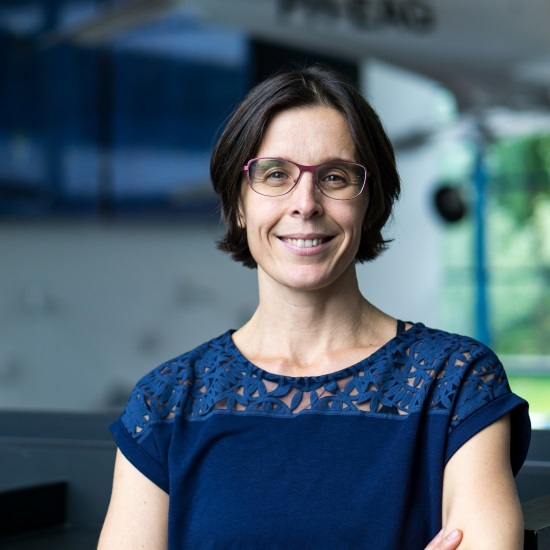
Dr Irene Fernandez Villegas, Delft University of Technology, The Netherlands

Dr Irene Fernandez Villegas, Delft University of Technology, The NetherlandsIrene Fernandez Villegas graduated as an Aerospace Engineer at the Poly-Technical University of Madrid (UPM). In 2005 she got a PhD degree from the same University on Resistance Welding of Thermoplastic Composites. She has more than 15 years of research experience on processing and welding of thermoplastic composites, first at the National Institute of Aerospace Engineering in Madrid and currently at the Delft University of Technology in the Netherlands, where she works as an Associate Professor. In the last 12 years the efforts of the research team led by Dr Fernandez Villegas at TU Delft have been strongly focused on understanding and developing ultrasonic welding of composite structures. Apart from her work on the development of welding technologies, Dr Fernandez Villegas is interested in exploring how to make use of these and other new technologies to design sustainable aircraft structures. |
| 14:35 - 14:40 | Questions |
| 14:40 - 14:50 |
Brittle strength changes with sample size by the Griffith energy principle
The purpose of this paper is to show that brittle test samples give a huge size effect that can take several different forms depending on the sample geometry, crack position and mode of force application. In general, the crack equilibrium force is not proportional to the sample cross-section area. Sometimes crack equilibrium force depends on dimension d or d1/2 and sometimes the force is independent of area, for example in peel or lap joint cracking. With adhering spheres, the crack force at equilibrium depends on sphere diameter, not on contact area, leading to an error of 103 in predicting the adhesion strength of nanoparticles using Galileo’s original stress criterion of failure. This big size effect arises from the potential energy term in the conservation theory, not considered by Griffith but dominating certain cracks. These examples illustrate the fact that strength of a brittle material containing a crack is an unsatisfactory concept because the cracks absorb surface energy driven by volume energy terms or by potential energy terms or a mixture of the two, leading to a disconnection between applied cracking force and sample cross-section area. 
Dr Kevin Kendall FRS, Adelan Ltd, UK

Dr Kevin Kendall FRS, Adelan Ltd, UKKevin Kendall gained his PhD from the Cavendish Laboratory in 1970 for studies of contact and friction supervised by Professor David Tabor FRS. He then worked at British Railways in Derby on adhesion of iron oxide nanoparticles and became interested in fracture of adhesive joints, co-authoring the JKR paper with Johnson and Roberts. After post-docs in Australia and USA, he joined ICI in Runcorn and continued to pursue both theory and application of particle adhesion and cracking of polymers, cements and ceramics. Later he was Professor at Keele and Birmingham, where he started the ceramic fuel cell spin-out company Adelan Ltd, based on thermal-shock resistant zirconia. |
| 14:50 - 14:55 | Questions |
| 14:55 - 15:15 | Discussion |
Chair

Dr Kevin Kendall FRS, Adelan Ltd, UK

Dr Kevin Kendall FRS, Adelan Ltd, UK
Kevin Kendall gained his PhD from the Cavendish Laboratory in 1970 for studies of contact and friction supervised by Professor David Tabor FRS. He then worked at British Railways in Derby on adhesion of iron oxide nanoparticles and became interested in fracture of adhesive joints, co-authoring the JKR paper with Johnson and Roberts. After post-docs in Australia and USA, he joined ICI in Runcorn and continued to pursue both theory and application of particle adhesion and cracking of polymers, cements and ceramics. Later he was Professor at Keele and Birmingham, where he started the ceramic fuel cell spin-out company Adelan Ltd, based on thermal-shock resistant zirconia.
| 15:15 - 16:00 |
Panel discussion

Dr Irene Fernandez Villegas, Delft University of Technology, The Netherlands

Dr Irene Fernandez Villegas, Delft University of Technology, The NetherlandsIrene Fernandez Villegas graduated as an Aerospace Engineer at the Poly-Technical University of Madrid (UPM). In 2005 she got a PhD degree from the same University on Resistance Welding of Thermoplastic Composites. She has more than 15 years of research experience on processing and welding of thermoplastic composites, first at the National Institute of Aerospace Engineering in Madrid and currently at the Delft University of Technology in the Netherlands, where she works as an Associate Professor. In the last 12 years the efforts of the research team led by Dr Fernandez Villegas at TU Delft have been strongly focused on understanding and developing ultrasonic welding of composite structures. Apart from her work on the development of welding technologies, Dr Fernandez Villegas is interested in exploring how to make use of these and other new technologies to design sustainable aircraft structures. 
Professor Małgorzata Lekka, Institute of Nuclear Physics, Polish Academy of Sciences, Poland

Professor Małgorzata Lekka, Institute of Nuclear Physics, Polish Academy of Sciences, PolandProfessor Małgorzata Lekka is the head of the Department of Biophysical Microstructures at the Institute of Nuclear Physics, Polish Academy of Sciences (IFJ PAN, Cracow, Poland). She is a member of the Interdisciplinary PhD Studies Council Board (InterDokMed). She studied physics at the Jagiellonian University in Cracow. In 1998, she obtained a PhD at the IFJ PAN. Her thesis focused on the mechanical properties of cancer cells, studied by atomic force microscopy (AFM). From 2004 – 2006, she was a NATO scholarship holder at the Ecole Polytechnique Federale de Lausanne (EPFL). From 2006 to 2013, parallel to her duties at the IFJ PAN, she conducted research at the EPFL. Her research focuses on the biomechanics of cells and tissues as indicators of various pathologies, with a strong emphasis on developing AFM as a tool for studying cancer-related changes. She has published more than 100 papers devoted to AFM applications in biology/biomedicine. 
Professor Kathryn Whitehead, Manchester Metropolitan University, UK

Professor Kathryn Whitehead, Manchester Metropolitan University, UKKathryn Whitehead is a Professor in Microbiology at Interfaces at Manchester Metropolitan University, UK. She has extensive experience in working on designing and characterising antimicrobial, biomimetic and anti-adhesive surfaces and decontamination systems for use in food industries and medical systems. Her work also includes a number of other collaborative areas including the development of antimicrobials, and investigating the growth (microbial fuel cells) and eradication of biofilms, the effects of oral bacterial metabolites on renal function and factors leading to the incidence of surgical site infections. She has published more than 100 articles in these areas. 
Professor Ian Kinloch, University of Manchester, UK

Professor Ian Kinloch, University of Manchester, UKIan Kinloch holds the Morgan Advanced Materials/Royal Academy of Engineering Research Chair in Carbon Materials, having previously held an EPSRC Challenging Engineering and EPSRC/RAEng Research Fellowships. Together with Dr Bissett, Dr Valles and Professor Young, he co-leads the Advanced Nanostructures Group which spans the National Graphene Institute, Henry Royce Institute and the Department of Materials at the University of Manchester. His research follows nanomaterials from their production through to their processing and ultimately to applications. This vertically integrated approach means that the appropriate materials can be processed into the optimum architecture for a given application, enabling new materials to realise their potential. Applications studies focus on composites and electrochemical power storage. 
Professor Rob Ritchie FREng ForMemRS, University of California, Berkeley, USA

Professor Rob Ritchie FREng ForMemRS, University of California, Berkeley, USARobert O Ritchie is the H.T. & Jessie Chua Distinguished Professor of Engineering in the Departments of Materials Science & Engineering and Mechanical Engineering at the University of California in Berkeley, and Senior Faculty Scientist at the Lawrence Berkeley National Laboratory. Prior to joining Berkeley in 1981, he was Associate Professor of Mechanical Engineering at MIT. He received MA, PhD and ScD degrees all from Cambridge University. He is known for his research into the mechanics and mechanisms of fracture and fatigue in a broad range of structural and biological materials. His current interests are focused on high-entropy alloys and bulk-metallic glasses, the mechanical properties of natural materials, including skin and bone, and the development of bioinspired structural materials. He is a member of the US National Academy of Engineering. |
|---|
